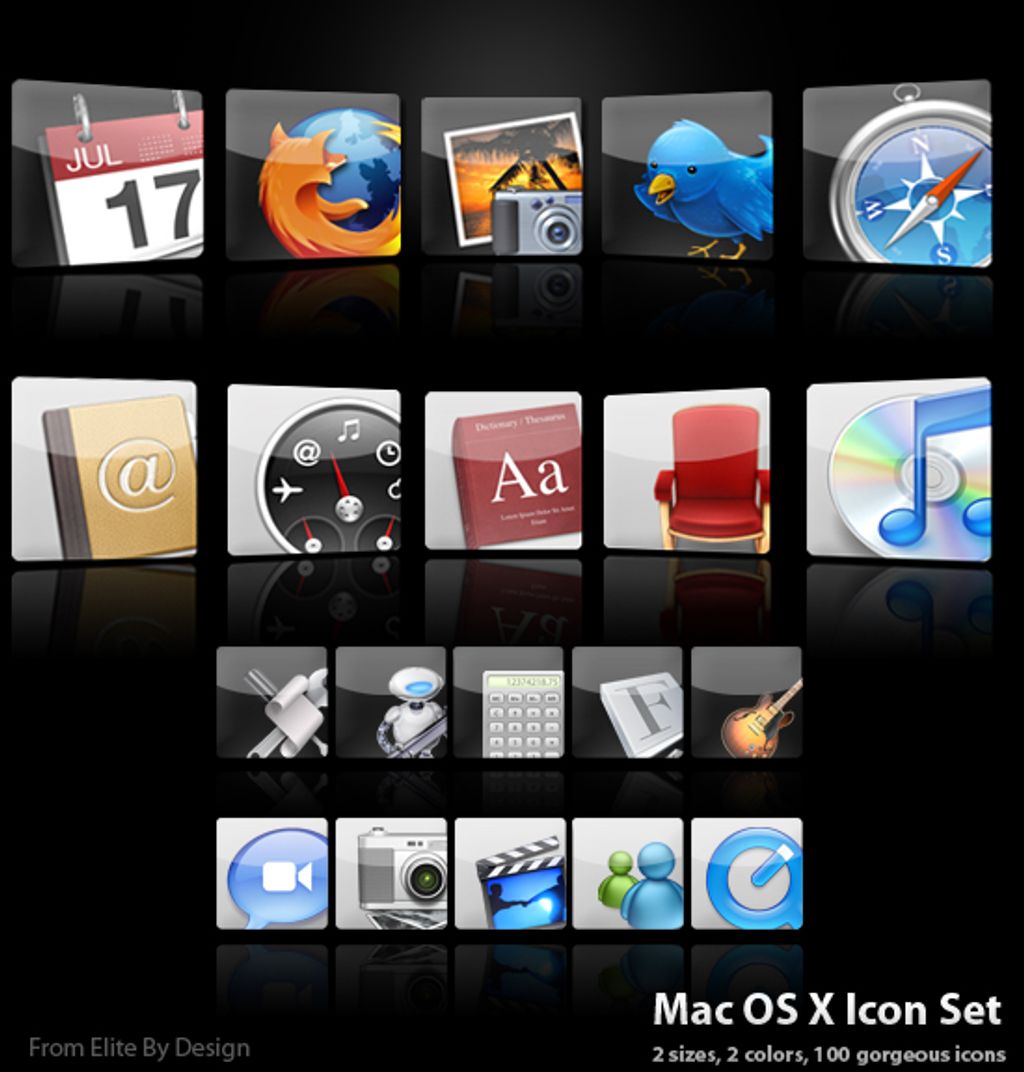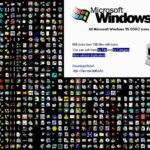When it comes to choosing the best operating system for your needs, there are several factors to consider. Understanding the different types of operating systems and their roles can help you make an informed decision. Compatibility with hardware and software, user interface and experience, security and privacy features, and support and updates are all important factors to consider. In this article, we will explore the key takeaways when it comes to choosing the best operating system for your needs.
Key Takeaways
- Understand the different types of operating systems and their roles
- Consider compatibility with hardware and software
- Evaluate the user interface and experience
- Prioritize security and privacy features
- Take into account support and updates
Understanding Operating Systems

What is an Operating System?
An operating system (OS) is a computer program that manages the computer’s hardware and software resources. It acts as an intermediary between the hardware and software components of the system, allowing them to work together efficiently. The OS provides a platform for running applications and ensures that different programs can run simultaneously without interfering with each other.
The primary functions of an operating system include process management, memory management, file system management, device management, and more advanced functionality. It is responsible for allocating system resources, scheduling tasks, managing memory usage, and controlling input/output operations.
Table: Types of Operating Systems
| Type | Description |
|---|---|
| Desktop Operating System | Designed for personal computers and laptops. Examples include Microsoft Windows, macOS, and Linux. |
| Server Operating System | Optimized for running servers and managing network resources. Examples include Windows Server, Linux Server, and Unix. |
| Mobile Operating System | Designed for mobile devices such as smartphones and tablets. Examples include Android, iOS, and Windows Mobile. |
By understanding the role and functions of an operating system, you can make informed decisions when choosing the right operating system for your needs.
The Role of an Operating System
The role of an operating system is to provide a platform for running applications and perform essential tasks such as file handling, input and output management, memory and process management, and controlling hardware devices like disk drives and printers. It acts as an intermediary between computer hardware and user applications, managing various resources and providing a user-friendly interface for interacting with the computer. A kernel, which is an important component of every operating system, manages the operations of computers and hardware. Firmware, on the other hand, is like the brain of your hardware, while the operating system is like the heart. Both are essential for the survival and proper functioning of a computer system.
Types of Operating Systems
There are several types of operating systems available, each with its own unique features and functionalities. Let’s take a closer look at some of the most popular ones:
Windows: Developed by Microsoft, Windows is one of the most widely used operating systems for personal computers. It features a graphical user interface (GUI) and supports a vast array of software applications.
macOS: Developed by Apple Inc., macOS is the operating system for Apple’s Macintosh computers. It is known for its sleek design, user-friendly interface, and integration with other Apple devices and services.
Linux: Linux is an open-source, Unix-like operating system kernel that serves as the foundation for various Linux distributions. It offers a high level of customization and is popular among developers and tech enthusiasts.
Choosing the Right Operating System

Identifying Your Needs
To make the best decision, it is important to consider your business needs, budget, and the features of the operating systems. First, consider the type of applications that you will be running on the server. Different operating systems are better suited for different types of applications. For example, Windows Server is a great choice for running web applications, while Linux is better for hosting databases. Next, consider your budget. Some operating systems are more expensive than others, so it is important to find one that fits within your budget. Additionally, some operating systems require additional hardware or software to run, which can add to the cost. Finally, consider the features of the operating systems. Different operating systems offer different features, such as security, scalability, and reliability. Choosing an operating system that offers the features you need for your business is important. By considering your business needs, budget, and the features of the available operating systems, you can make an informed decision.
Compatibility with Hardware and Software
Compatibility with hardware and software is a crucial factor to consider when choosing an operating system. Using an unsupported OS may lead to challenges in using critical applications, as many equipment and software manufacturers only maintain compatibility with supported operating systems for a short time. By using a supported OS, you can ensure that you can run the software you need to work productively. Additionally, compatibility with a wide range of hardware components and applications is important, including support for older hardware and software. This ensures that your operating system can work seamlessly with your existing devices and software tools.
User Interface and User Experience
User Interface (UI) and User Experience (UX) are crucial factors to consider when choosing an operating system. A user-friendly interface makes it easy for the user to understand how to use the OS and its features. It should be well-organized, easy to navigate, and provide clear instructions. Additionally, a good UI should offer customization options, allowing users to personalize their experience according to their preferences. On the other hand, UX focuses on the overall experience of using the operating system. Intuitive design, ease of use, and helpful features contribute to a more enjoyable and productive user experience. An operating system with a well-designed UI and a positive UX can greatly enhance productivity and user satisfaction.
When evaluating the UI and UX of an operating system, it’s important to consider factors such as:
- Customizability and flexibility: Users should be able to personalize their experience through settings and customization options, allowing for better adaptability to different work styles and preferences.
- Ecosystem and community support: A robust ecosystem of applications, developers, and support communities is critical for the operating system’s growth and user satisfaction.
- Compatibility: The operating system should be compatible with a wide range of hardware components and applications, including support for older hardware and software.
- Scalability: The capability to handle increased workloads and adapt to the growing needs of users and organizations is essential for an advanced operating system.
Considering these factors will help you choose an operating system that provides a seamless and user-friendly interface, enhancing your overall computing experience.
Security and Privacy
When choosing an operating system, security and privacy are important considerations. A good operating system should have strong security features such as built-in firewalls, secure boot, encryption, and regular software updates to protect user data and ensure privacy. It should also be compatible with a wide range of hardware components and applications, including support for older hardware and software. Additionally, scalability is essential for an advanced operating system to handle increased workloads and adapt to the growing needs of users and organizations. User experience (UX) is another factor to consider, with an intuitive user interface and ease of use.
Support and Updates
One important aspect to consider when choosing an operating system is the level of support and updates it receives. A supported operating system is one that is still maintained and patched by the maker of the OS. This ensures that any security vulnerabilities or bugs are addressed in a timely manner, reducing the risk of cyber threats and system malfunctions. When an operating system reaches its ‘End of Support’ or ‘End of Life’ phase, the maker no longer offers support and patches, which can have significant consequences for businesses. Unsupported operating systems may lead to compatibility issues with hardware and software, making it challenging to run critical applications. By using a supported operating system, you can ensure the reliability and security of your system, enabling you to work productively and protect your data.
Popular Operating Systems

Windows
Windows is a widely used operating system developed by Microsoft. It was first released in 1985 and has since been updated numerous times. As of 2022, Windows 11 is the most recent operating system version. Windows 10, the previous version, introduced many new features, including a fresh start menu, virtual desktops, and an improved taskbar. It also introduced Microsoft Edge, a new web browser.
Some key features of Windows include:
- Microsoft Store: Access to a wide range of apps, games, and entertainment through the unified Microsoft Store.
- Continuum Mode: Seamless transition between tablet and desktop modes for hybrid devices.
- Virtual Desktops: Multiple desktops for improved multitasking and organization.
However, there are a few drawbacks to consider when using Windows. It is a resource-intensive operating system, which means it may require more system resources, such as RAM and processor power, leading to potential performance issues on older hardware. Windows has also historically been a target for malware and viruses due to its widespread use, although Microsoft has implemented security measures to mitigate this risk. Additionally, Windows updates often require system reboots, which can interrupt ongoing work and be inconvenient.
Despite these drawbacks, Windows provides a user-friendly interface with a graphical user interface (GUI) that is known for its accessibility and ease of use. Overall, Windows is a versatile operating system that offers a wide range of features and capabilities for users.
macOS
macOS is another highly advanced operating system that is designed specifically for Apple’s computers. It offers a range of advanced features, including a built-in virtual assistant, advanced file management tools, and top-notch security. macOS is known for its stability, offering a robust and reliable performance that allows users to work seamlessly without interruptions. It provides a clean and intuitive user interface, featuring a dock for quick access to applications and a comprehensive menu bar for easy navigation. macOS seamlessly integrates with other Apple devices, allowing users to work across multiple devices seamlessly using features like Handoff and Continuity. It also tightly integrates with Apple’s iCloud services, providing users with convenient access to their files and data across all their devices.
Linux
Linux is a powerful and highly customizable open-source operating system that is widely used in various devices and platforms. It is based on UNIX and was initially created as a hobby project by Linus Torvalds in 1991. Today, Linux has become a popular choice for users and developers due to its stability, security, and versatility. It has a strong community support and a vast ecosystem of applications and distributions available. Linux is known for its command-line interface and ability to run on various hardware architectures. The kernel is the core component of Linux and provides multitasking, system that offers a high degree of customizability and flexibility. It is used by many tech enthusiasts and professionals due to its advanced features and security.
Chrome OS
Chrome OS is an operating system designed specifically for Chromebooks and other Chrome OS devices. It is a lightweight, secure, and fast operating system that primarily focuses on web applications and cloud computing. Chrome OS provides a streamlined user interface and integrates seamlessly with Google’s suite of applications and services. It offers advanced features such as a built-in virtual assistant, advanced file management tools, and top-notch security. Chrome OS automatically updates itself in the background, ensuring users have the latest security patches and features without any manual efforts. It also supports various offline applications, allowing users to work offline using productivity tools like Google Docs and syncs the data once an internet connection is available. With its minimalistic design and fast boot-up time, Chrome OS provides a user-friendly experience for users.
Operating Systems for Specific Use Cases

Gaming
When it comes to gaming, Windows is often considered the go-to operating system. Many commercial software and games are developed primarily for Windows and may not have native Linux versions. While compatibility layers like Wine exist, they might not provide a seamless experience for all applications. However, it’s worth noting that the Linux community is continuously working on providing alternatives for each software that comes to the market. Linux systems have their own advantages and disadvantages, and it’s important to explore these experiences to fully understand their potential.
Creative Work
When it comes to creative work, having the right operating system can greatly enhance your productivity and creativity. One popular choice among creative professionals is macOS, which is known for its intuitive user interface and powerful built-in creative tools. With macOS, you have access to software like Final Cut Pro for video editing, Logic Pro for music production, and Adobe Creative Cloud for graphic design and photo editing.
Another option for creative work is Windows, which offers a wide range of software options and is compatible with a variety of hardware. Windows has a large user base, making it easy to find tutorials, support, and resources for creative software.
If you prefer a more open-source and customizable operating system, Linux is worth considering. Linux provides a high level of control and flexibility, allowing you to tailor your system to your specific creative needs. It also has a vibrant community of developers and users who can provide assistance and guidance.
Lastly, for those who primarily work online and rely on web-based applications, Chrome OS can be a suitable choice. Chrome OS is lightweight, fast, and optimized for web browsing and cloud-based productivity tools. It’s a great option for those who value simplicity and seamless integration with Google services.
Business and Productivity
Computers with modern computing specifications provide better performance and operate faster, allowing employees to work more efficiently. This increased efficiency can lead to cost reduction, improved customer satisfaction, and increased revenue. Additionally, computers with inadequate computing resources are more likely to experience crashes and other issues that disrupt employee productivity. Upgrading to computers with modern specifications can help reduce interruptions and ensure smooth workflow.
Investing in computers with modern computing specifications is essential for maximizing human capital. These specifications include adequate processors, memory (RAM), and storage. Upgrading computers regularly is necessary as technology evolves. While there is a cost associated with upgrading every three years, using computers with poor specifications can have a significant negative impact on productivity. Therefore, it is crucial for businesses to stay current with specifications and use supported operating systems.
Long-term cost savings can be achieved by investing in computers with modern specifications. Although there is an initial investment, the increased productivity, reduced interruptions, and improved employee morale outweigh the cost. It is important to prioritize providing employees with the right tools to maximize their success and ensure they are working at their maximum potential. By continuously investing in computers with modern computing specifications, businesses can enhance efficiency and achieve long-term cost savings.
Education
Education is a crucial aspect when considering an operating system. Whether you’re a student or a teacher, having an OS that supports educational tools and resources is essential. Some operating systems offer dedicated education-focused features, such as built-in note-taking apps, digital textbooks, and educational software. For example, Windows 10 Education edition provides access to Microsoft’s suite of educational tools, including OneNote and Teams. macOS also offers a range of educational apps through the Mac App Store. Additionally, Linux distributions like Ubuntu have a wide range of open-source educational software available. When choosing an operating system for education, it’s important to consider the compatibility of educational software and the ease of use for both students and teachers.
Server and Networking
FreeBSD is a highly versatile operating system that is optimized for high performance and efficiency, making it suitable for both desktop and server environments. It offers multiplatform support, running on a wide range of platforms including x86, ARM, MIPS, PowerPC, and more. FreeBSD provides excellent networking capabilities, including support for TCP/IP protocols, IPv6, and network virtualization technologies like Virtual Private Networks (VPNs). It also offers robust security features, such as built-in firewall capabilities, Mandatory Access Control (MAC), and file system encryption. In terms of performance, FreeBSD is known for its scalability, as it scales well across different hardware architectures and can handle heavy workloads.
Conclusion
In conclusion, choosing the best operating system for your needs depends on various factors such as the type of server, the number of users, and the features you require. Whether you are a home user or a business, there are options available for everyone. Linux distributions like Debian Server, Fedora Server, and Red Hat Enterprise Linux offer unlimited user connections, different operating systems, and a range of features. On the other hand, paid operating systems like Microsoft Windows and Mac OS provide enterprise support and remote access. Ultimately, the best operating system is the one that provides the most features, security, and storage capacity that align with your specific requirements. Consider factors such as user-friendliness, cost-effectiveness, and compatibility when making your decision. With the right operating system, you can ensure smooth performance, reliability, and strong security for your server.
Frequently Asked Questions
What is an operating system?
An operating system is a software that manages computer hardware and software resources and provides common services for computer programs.
Why is choosing the right operating system important?
Choosing the right operating system is important because it determines the compatibility, user experience, security, and support for your computer.
What factors should I consider when choosing an operating system?
Some factors to consider when choosing an operating system include your needs, compatibility with hardware and software, user interface and experience, security and privacy features, and support and updates.
Which operating system is the most popular?
The most popular operating systems are Windows, macOS, Linux, and Chrome OS.
What are some operating systems for specific use cases?
For gaming, Windows is a popular choice. For creative work, macOS is often preferred. Linux is commonly used for business and productivity. Chrome OS is popular in education, and Linux is commonly used for server and networking purposes.
What are some key features to look for in an operating system?
Some key features to look for in an operating system include reliability, performance, security and privacy, compatibility, and user support.




